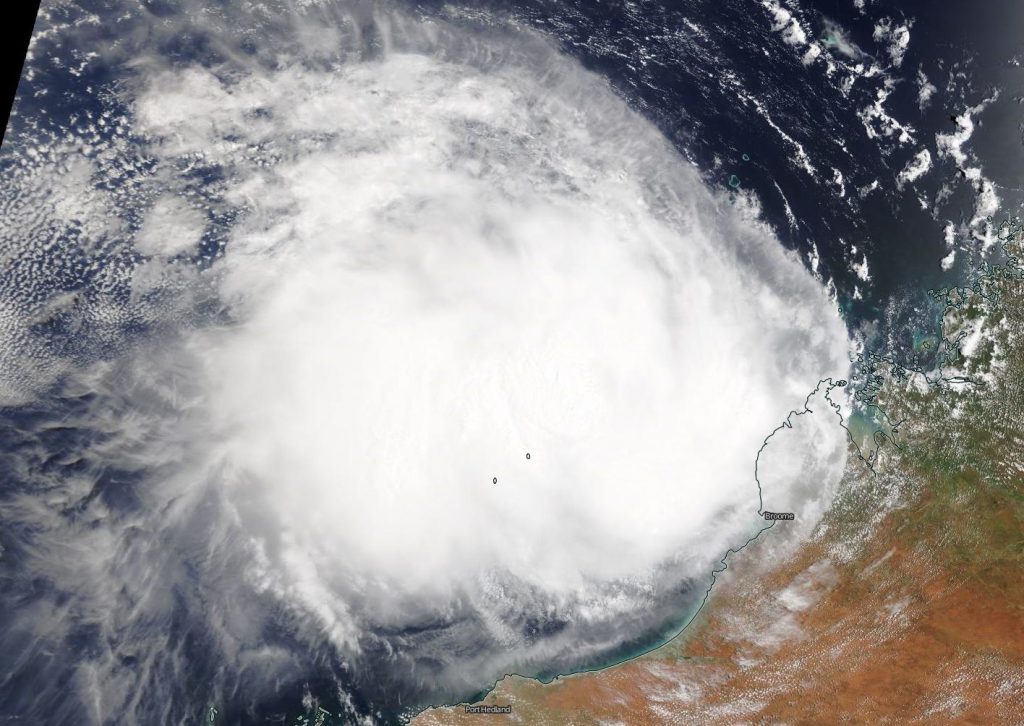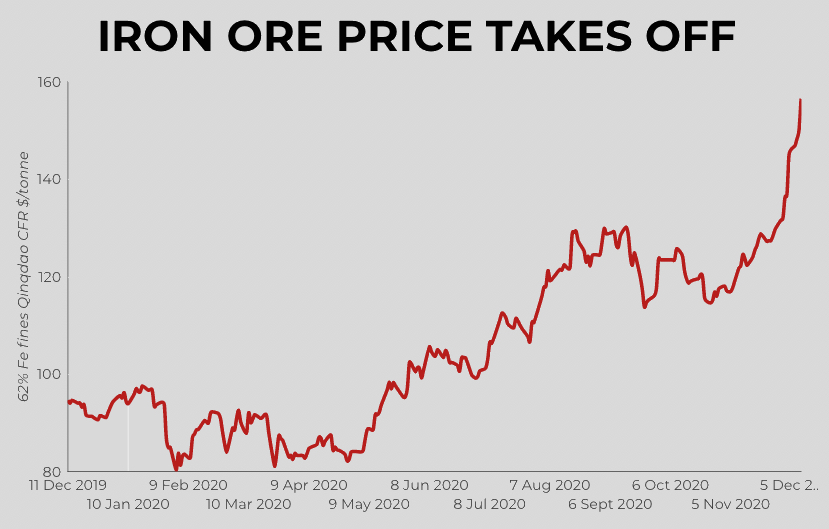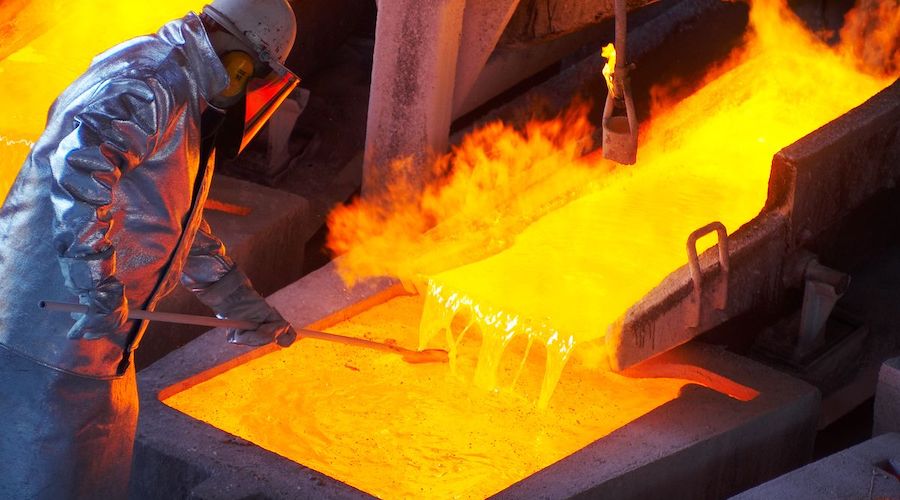Iron ore price goes parabolic after cyclone warning

Iron ore prices shot higher again on Thursday – the twelfth straight day of gains – after authorities at the world’s largest iron ore export terminal issued a cyclone warning, exacerbating an already tight market.
According to Fastmarkets MB, benchmark 62% Fe fines imported into Northern China were changing hands for $156.58 a tonne on Thursday, up 4.3% from Wednesday’s peg while 65% grades from Brazil surged to over $170 a tonne.
That was the highest level for the steelmaking raw material since February 2013 and brings gains for 2020 to 70%.
The frenzy for ore was also evident on Asian futures markets with contracts in Singapore and on the Dalian exchange in China hitting record highs.

Supply disruptions
Iron ore markets have caught fire due to a combination of unprecedented demand from China, which has embarked on a massive infrastructure build-out to stimulate the economy post-pandemic and worries about supply from Brazil and Australia.
“There is no way iron ore can be at $150 based on demand and supply fundamentals”
Atilla Widnell, Navigate Commodities
On Thursday, the Pilbara Ports Authority issued a weather warning and said it was clearing Port Hedland in Western Australia and anchorages of large vessels.
Vale is struggling to return to full production capacity as it deals with the aftermath of a deadly dam collapse with shipments from the country falling below 30 million tonnes for the first time since May.
Output from the Pilbara could be impacted by steps taken following an inquiry into Rio Tinto’s destruction of an Aboriginal heritage site.
Disequilibrium
“The market is in disequilibrium right now – investors are trading industrial metals like iron ore as a speculative play on how China’s economy is going to perform,” Atilla Widnell, co-founder at Navigate Commodities told Bloomberg:
“There is no way iron ore can be at $150 based on demand and supply fundamentals.”
“The bull market for iron ore is set to extend into 2021″
Morgan Stanley said prices look increasingly overbought, although the bank is forecasting a deficit, while antipodean analysts at ANZ Banking Group warned a slowdown in steel production in China could cut short the rally.
Zhuo Guiqiu, an analyst with Jinrui Capital, told Reuters that money from governments’ loose monetary policies was flowing into markets with better fundamentals:
“Iron ore is expected to face supply shortage while demand in both China and overseas markets are seen higher next year,” Zhuo said.
Port stocks
Goldman Sachs was more bullish about the prospects that the rally can be sustained, adding in a research report that port inventories in China are a good indication of demand as import levels continue at a record pace.
The bank predicts portside stocks could fall from 130 million tonnes currently to below 100 million tonnes by mid-2021, which would be the first time in double digits since 2016:
“The bull market for iron ore is set to extend into 2021.
“We now expect another substantial deficit next year, supported by a combination of only gradually decelerating China steel demand growth, sharply re-accelerating Western steel demand growth and tepid supply growth.”
(With files from Reuters and Bloomberg)
{{ commodity.name }}
{{ post.title }}
{{ post.date }}

Comments